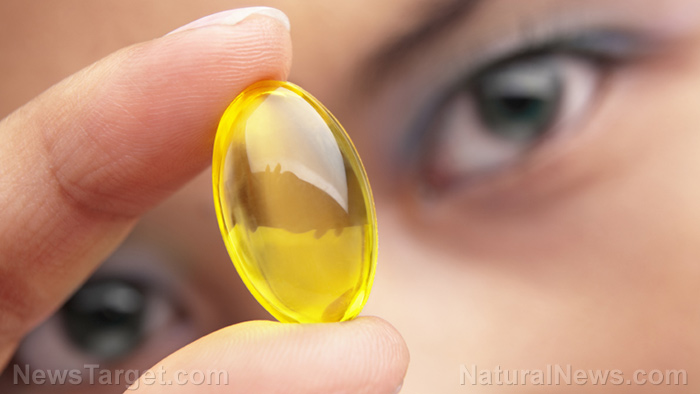New study looks at the anti-diabetes potential of autumn olive
05/09/2019 / By Evangelyn Rodriguez

These days, there are many drugs in the market designed to treat diabetes, particularly Type 2 diabetes. These synthetic drugs, however, come with a lot of side effects which can make treatment uncomfortable for patients. Some of the most common side effects are kidney complications, upset stomachs, tiredness, and bloating. That’s why in recent years, people have started looking for better alternatives, and natural treatments involving plants and fruits rich in phytochemicals have become popular. A study done by researchers from the University of Malakand in Pakistan focuses light on one such fruit that is indigenous to East Asia: the autumn olive. The autumn olive or Japanese silverberry (Elaeagnus umbellata) is a highly medicinal shrub used to treat coughs and other pulmonary problems. In their study published in the journal BMC Complementary and Alternative Medicine, researchers discover that the autumn olive contains phytochemicals that can be used to fight oxidative stress and treat Type 2 diabetes and some complications associated with it.
Autumn olive contains antioxidants and enzyme inhibitors that lower blood glucose
For their study, the researchers tested autumn olive fractions for antioxidant activity using two different assays, the Brand-Williams assay and ABTS assay. Autumn olive fractions obtained using chloroform and ethanol were found to have high antioxidant activities, as evidenced by their ability to inhibit the free radicals used in both assays. These results proved that autumn olive contains phytochemicals with strong antioxidant activities.
Autumn olive extracts were also tested on two enzymes, alpha-amylase and alpha-glucosidase. These enzymes break down carbohydrates from food to form glucose. Alpha-glucosidase inhibitors are used as anti-diabetic drugs because they help lower glucose levels in the blood by preventing carbohydrate digestion. Using different assays, they tested the enzyme inhibitory potential of autumn olive and found that fractions obtained using chloroform and ethyl actetate were effective at inhibiting the activity of alpha-amylase and alpha-glucosidase. This finding suggested that the chemicals contained in autumn olive works the same way as antidiabetic drugs. (Related: Banana stem juice demonstrates antidiabetic potential – study.)
The researchers also looked into the effects of autumn olive on hyperglycemia or high blood glucose levels. They used rats administered with streptozotocin (STZ) to induce Type 2 diabetes and fed them autumn olive extracts. They reported a significant decrease in the blood sugar levels of diabetic rats after 21 days. The reduction, they said, began after five days of being fed the extracts. Autumn olive also reversed the weight loss caused by STZ and researchers observed a significant increase in the weight of the rats after 21 days of treatment.
Autumn olive improves the lipid profile
In terms of serum lipid profile, autumn olive also proved capable of conferring benefits. After 21 days of treatment with autumn olive extracts, the researchers found a significant reduction in the total cholesterol, triglycerides, and low-density lipoprotein (LDL) of diabetic rats. Autumn olive also increased their HDL (high-density lipoprotein). LDL is considered as bad cholesterol because it takes cholesterol to the arteries, where it may collect in the walls. HDL, on the other hand, is considered as good cholesterol because it aids in the removal of other cholesterol from the blood.
Aside from improving the lipid profile of diabetic rats, autumn olive also had positive effects on kidney and liver function. Some of the complications associated with Type 2 diabetes are heart disease, kidney failure,and liver damage. These complications are characterized by high levels of serum glutamate oxaloacetate transaminase (SGOT), serum glutamate pyruvate transaminase (SGPT), and serum alkaline phosphatase (ALP). When the researchers analyzed blood samples taken from the diabetic rats, they found that autumn olive significantly reduced their SGPT, SGOT and ALP, suggesting that autumn olive can also prevent the secondary complications of Type 2 diabetes.
Find out more about autumn olive and other natural foods that can help with diabetes at NaturalCures.news.
Sources include:
BMCComplementalAlternMed.BiomedCentral.com
Submit a correction >>
Tagged Under:
alternative medicine, autumn olive, blood sugar, disease treatments, food cures, food is medicine, food science, functional food, future science, glucose, hyperglycemia, remedies, research, Type 2 Diabetes
This article may contain statements that reflect the opinion of the author
RECENT NEWS & ARTICLES
FoodCures.News is a fact-based public education website published by Food Cures News Features, LLC.
All content copyright © 2018 by Food Cures News Features, LLC.
Contact Us with Tips or Corrections
All trademarks, registered trademarks and servicemarks mentioned on this site are the property of their respective owners.





















